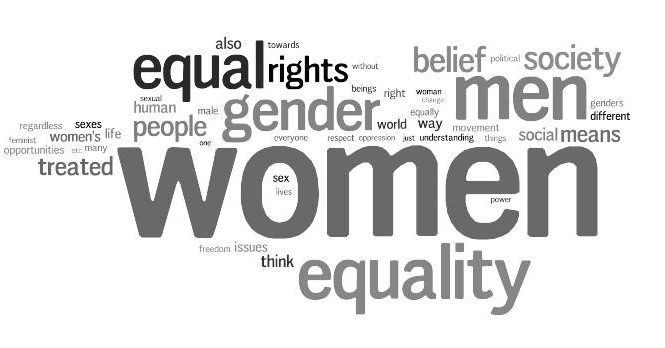Feminist Approach
What Is Feminist Theory?
Feminist theory, or feminism, is support of equality for women and men. Although all feminists strive for gender equality, there are various ways to approach this theory, including liberal feminism, socialist feminism and radical feminism. Let’s take a look at the basic feminist ideas and various approaches to achieving gender equality.
Basic Feminist Ideas
Both females and males who identify themselves as feminists disagree on many things. That being said, most feminists agree on five basic principles:
- Working to increase equality: Feminist thought links ideas to action, insisting we should push for change toward gender equality and not just talk about it.
- Expanding human choice: Feminists believe that both men and women should have the freedom to develop their human interests and talents, even if those interests and talents conflict with the status quo. For example, if a woman wants to be a mechanic, she should have the right and opportunity to do so.
- Eliminating gender stratification: Feminists oppose laws and cultural norms that limit income, educational and job opportunities for women.
- Ending sexual violence & promoting sexual freedom: Feminists feel that women should have control over their sexuality and reproduction.
Definition
- Feminism is the belief that women should have equal rights to men. In consequence, the feminist movement fights for equal rights and opportunities for women.
- There are many different kinds of feminism and feminists themselves tend to disagree about the ways in which women are disadvantaged and what exactly should be done to get equal rights. For example, ‘social feminists’ believe that women are exploited by the capitalist system both at work and in the home.
Improvements?
It can be argued that there have been real improvements in the way that women are now represented in the media possibly because of the increase in women working in the media, sometimes in positions of power. However, many would argue that women are still represented in a negative and stereotypical way and are still a long way from enjoying equal power in media institutions. Feminists would argue that this reflects and reinforces the unequal social, economic and political position of women.
The First Wave
- 19th century and early 20th century UK & US
- It won improved rights for women in marriage and property. Its biggest achievement was winning some political power. In the UK the Suffragettes and Suffragists campaigned for the women’s vote.
- In 1918, women over thirty who owned property won the vote and in 1928 it was extended to all women over twenty-one.
The Second Wave
- 1960s & 1970s
- It extended the fight beyond political rights to education, work and the home.
- In ‘The Feminine Mystique’ (1963) Betty Freidan argues women were unhappy because of the feminine mystique. She said this was a damaging ideal of femininity which she called, “The Happy Housewife” and it restricted women to the role of housewife and mother, giving up on work and education.
- The Female Eunuch – Germaine Greer (1970)
- Greer argued women are ‘castrated’, the eunuch of the title, by society. In particular she attacked the nuclear family, romantic role and the limits on women’s sexuality. She argued that gender roles were not natural but learned. They conditioned girls to conform to a very restrictive femininity. The book has been criticised for not offering any realistic solutions to women’s oppression, because it proposed action by individual women rather than organised political action.
The Third Wave
- 1990s – present
- Widened the feminist movement and its ideas beyond middle class, white women, addressing the different disadvantages women experience because of, for example their race, ethnicity and class.
- Some argue that seeing the history of feminism in just these three waves can ignore the fight for equal rights and the end to discrimination by women outside the large feminist movements in the UK and US, including working class women and black and ethnic minority women.
Post-feminism
- 1980s – present
- Includes a wide range of reactions to the feminist movement and is often critical of the feminist ideas. The word ‘post’ suggests that feminism isn’t relevant anymore because women have won equal rights. Other post feminists ideas argue that younger women don’t see feminism as relevant to them now. The may still believe in equal rights for women, but either see themselves as individuals, not part of a feminist movement or don’t want to use the word ‘feminist’. This has been criticised by feminists as a way of ‘manufacturing consent’ for the fact that women are still unequal, by getting women to accept their unequal position in society.
- Feminists argue that sexualised images of girls and young women now saturate the media and are widely available in mainstream media, such as advertising, magazines and television. This damages women’s self-image and it also distorts men’s view of women. The internet has led to increased and easier access to pornography, whose message is that women are sexually available and their bodies are for sale.
